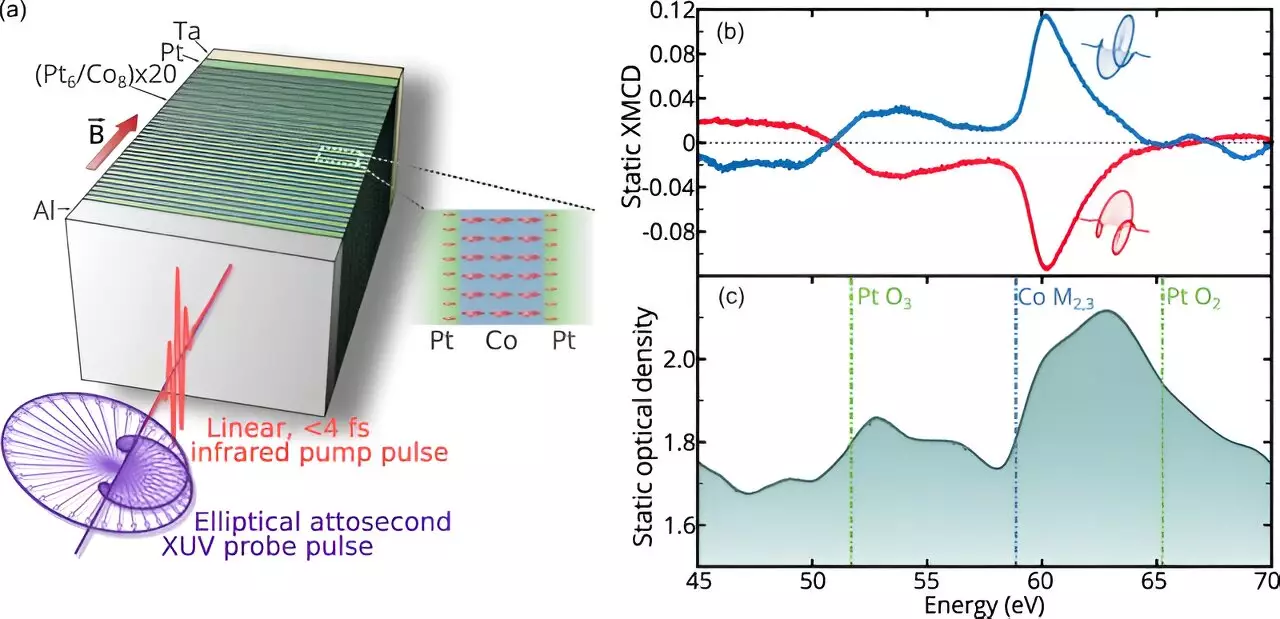Recent research carried out by an international team of physicists has paved the way for a new paradigm in the field of spintronics, the study of the intrinsic spin of electrons and its associated magnetic moment in solid-state devices. Their study, detailed in the prestigious journal *Physical Review Letters*, illustrates a novel method to generate spin currents using ultrashort laser pulses. This innovative approach could potentially revolutionize electronic devices, ushering in faster and more energy-efficient technologies.
Spin currents represent a unique form of electrical flow whereby electrons execute their movement in a coordinated manner, dictated by their aligned spins. Conventional electronics rely on charge flow, but the integration of spin currents promises to enhance device performance significantly. The prospect of spintronic devices running at higher speeds while consuming less energy has captivated researchers for years. Notably, previous methodologies to generate these currents were indirect and fraught with inefficiencies, primarily owing to the mixed orientations of spins generated by the lasers involved. This new study addresses these shortfalls by demonstrating a direct method for producing spin currents with uniformly aligned electron spins.
The research team’s experimental setup consists of a layered structure made up of 20 alternating strata of platinum and cobalt, each measuring merely a nanometer in thickness. This minuscule scale is crucial because it allows for significant interaction effects that are imperative for effective spin generation. After creating this target block, the team applied a magnetic field that aligned the spins of the electrons within the layers. This precise alignment was integral to the success of the experiment since it effectively reduced the complexity involved in managing the spin orientation, a major hurdle in earlier methodologies.
Following the establishment of a suitable environment for spin alignment, the team employed a linearly polarized laser to initiate the current generation. Subsequently, a circularly polarized probe laser was also directed at the block. The interaction between these laser pulses enabled a rapid transfer of spin information across the thin films within a timeframe of only a few femtoseconds—far surpassing the speed of previous techniques. Such ultrafast dynamics could facilitate new operating regimes in electronics, making it increasingly feasible to harness spin currents in practical applications.
The researchers not only relied on experimental data but also performed theoretical calculations to validate their findings. The approximate interactions between electrons predicted by their models corresponded closely with the experimental observations. This congruence between theory and practice bodes well for future explorations in the field, as it provides a solid foundation upon which further advancements can be built.
The direct generation of spin currents through ultrashort laser pulses represents a significant leap forward in spintronics. The implications of this research extend far beyond the laboratory; if harnessed effectively, this technology could lead to the development of next-generation electronic devices that dramatically reduce energy consumption while enhancing performance. As the quest for efficient and speedy electronic components continues, innovations like these could redefine the landscape of technology.


Leave a Reply